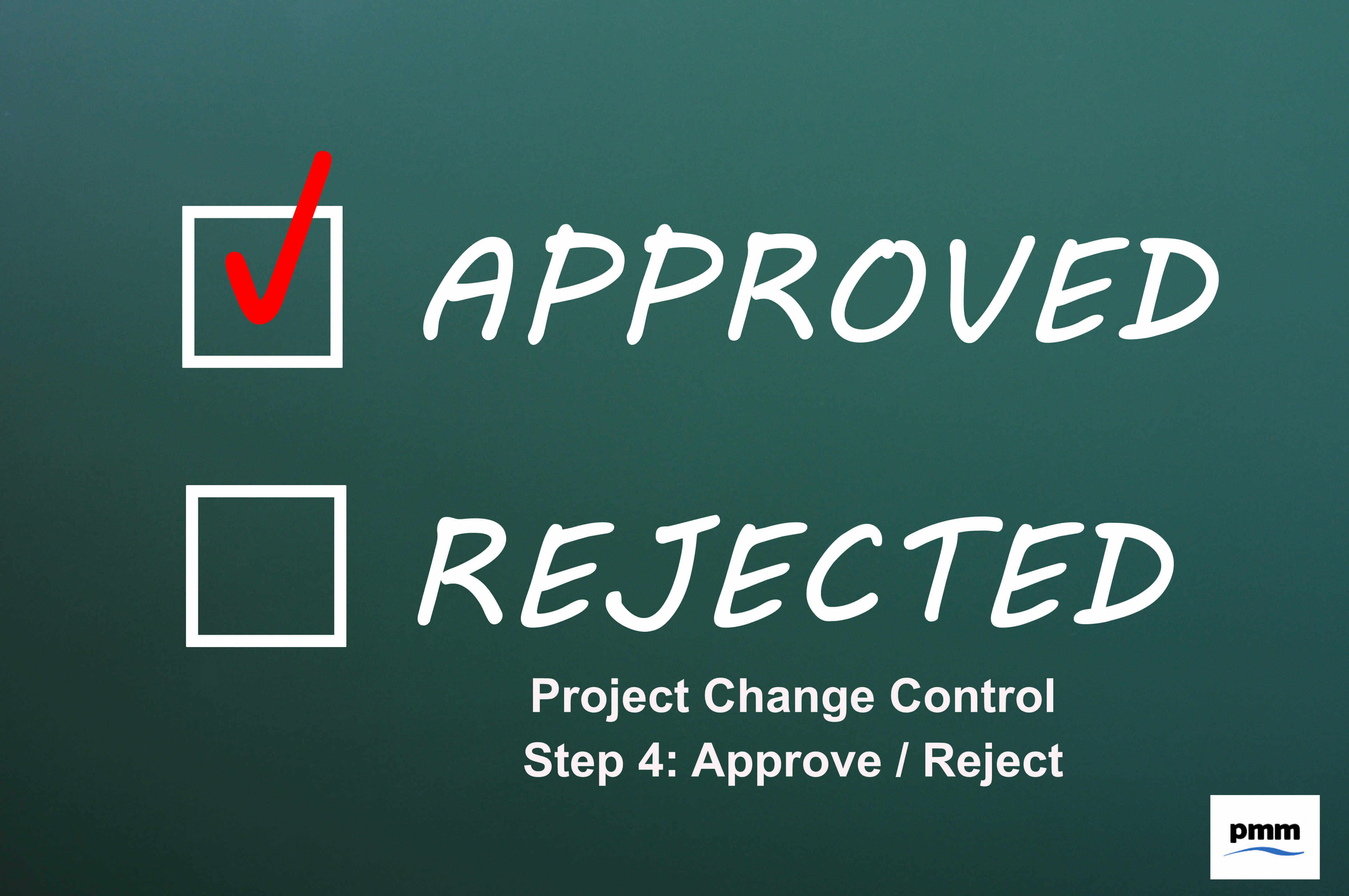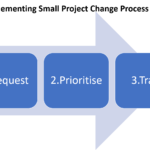This week’s post is going to cover step 4 of the project change control process, Approve / Reject Project Change Request.
- Identify change
- Impact assessment
- Review change request
- Approve / reject project change request
- Implement change
You can read the overview post by visiting Overview of project change control process, where I covered the 5 core steps of project change control.
Purpose of Approve / Reject process
This is an important step in the project change control process. It formalises the decision in respect of the change request.
By having a formal process for making the decision, this means that it is easy to demonstrate that any change request decision has been made with the appropriate governance.
It also means that there is a very clear audit trail to demonstrate the decision. This can be useful if a question is ever raised why the scope of the project was changed and who approved the change.
Why is this important?
If there is no formal process to allow for the decision to be made, this creates a risk that any accepted (or rejected) change does not have the full mandate of all stakeholders.
This can cause many problems including:
- Teams who need to contribute the change will not make the required changes without the official approval
- Stakeholders may question why changes were made / budget spent at a future point
Who conducts the approve / reject process?
This process should typically be managed by a central PMO or central function.
This will ensure that the project details are presented in the correct format. More importantly the PMO can ensure that the change is presented so that it can be understood by all stakeholders.
The central PMO can ensure that all stakeholders who need to be part of the decision process are engaged and provided with the appropriate information.
Approve / reject process
The process is very simple. All stakeholders required to make the decision need to have the change request details shared with them so they can make a decision.
It is important that the process is documented including, how a decision can be made. For example what if there are 10 stakeholders who need to make the decision.
If 6 vote “yes” is that sufficient? What happens if 5 vote “yes” and 5 vote “no”? Who is responsible for a deciding vote?
Then is could be that all 10 have to vote “yes” for a decision.
You need to think what is appropriate for your organisation.
Tip: It is a good idea for the PMO to organise a central Change Board. This then allows for all project change requests to be presented with all stakeholders present. The change request can then be presented (normally by the project manager) and a debate can then take place to reach consensus.
By issuing a terms of reference for the Change Board, this will ensure all parties understand the governance for decisions.
The added benefit is the meeting can be captured in the minutes of the meeting as an official record of decisions.
What to do where a decision is not made?
It is worth spending a moment on what should be done where a decision cannot be reached.
During the meeting, it is important to gain an understanding of all of the concerns. Then agree a time scale for when the change request will be represented.
This avoids time being wasted when a decision will not be reached. It ensures the concerns are captured. This allows the project team to provide the additional information ahead of the change request being represented.
Approve / reject template
There is no specific template required for the review / reject step of the process.
However, it is a good idea to have a central register of change requests. This can be used to produce a meeting pack for the Change Board to allow the project change requests to be reviewed.
This is a good approach as it minimises the need to create additional documents. The PMO should be able to copy and paste the appropriate part of the change request register.
The meeting material should then be published at least 24 business hours, ideally 48 hours ahead of the meeting to allow for the material to be reviewed by the stakeholders.
A change request and change request register template can be found in the PMO Template Framework.
Change request decision
When a decision is reached, it should be recorded and communicated to all relevent parties.
This is where making the decision using a governance body like a Change Board can be really useful.
The minutes can be used as the mechanism to communicate the formal decision.
Summary
- It is critical to have a mechanism for recording the formal approval / rejection of project change requests
- It is a good idea to set-up a regular Project Change Board for the approve or rejection of project change requests
- Minutes of the project change board provide the evidence and audit trail for decisions
- Using project templates, like those in the PMO Template Framework can help establish the change request process






